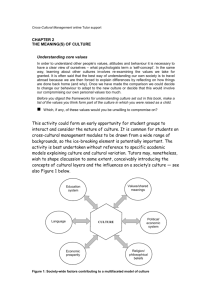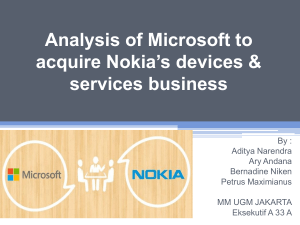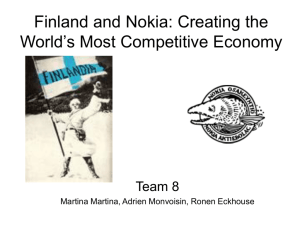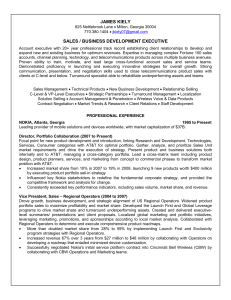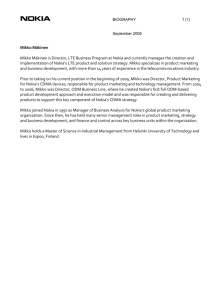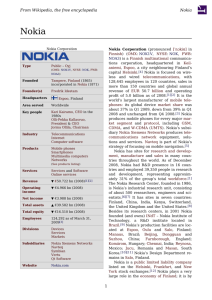Porter, Sölvell Executive Summary 30 Jan 2014 Hampton Roads
advertisement
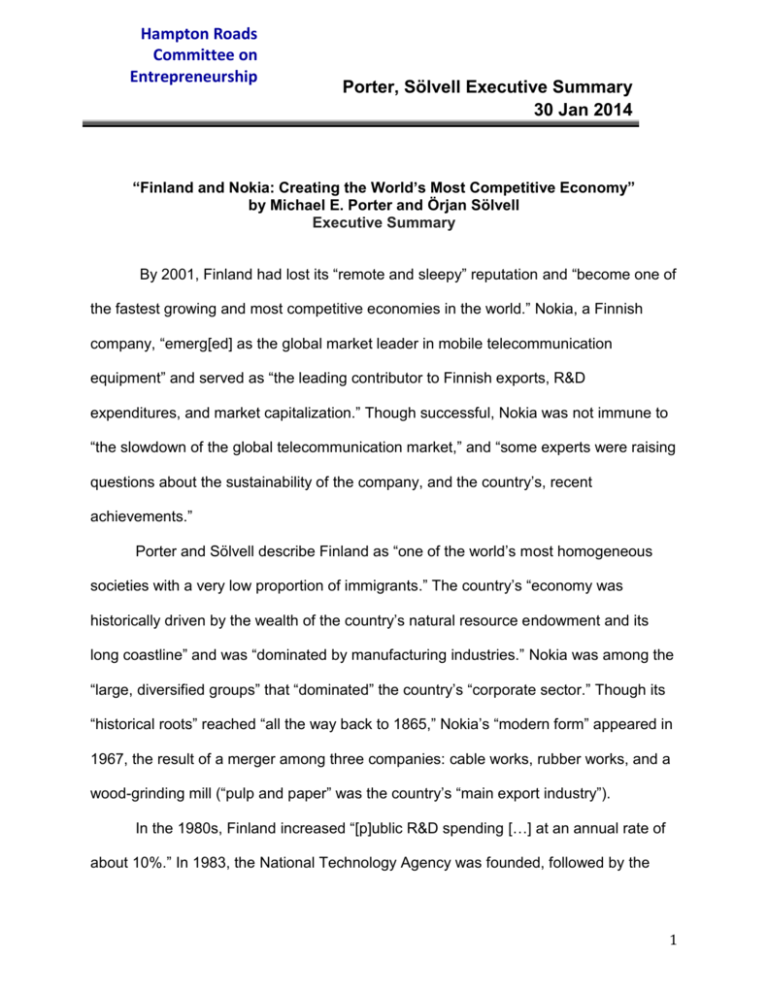
Hampton Roads Committee on Entrepreneurship Porter, Sölvell Executive Summary 30 Jan 2014 “Finland and Nokia: Creating the World’s Most Competitive Economy” by Michael E. Porter and Örjan Sölvell Executive Summary By 2001, Finland had lost its “remote and sleepy” reputation and “become one of the fastest growing and most competitive economies in the world.” Nokia, a Finnish company, “emerg[ed] as the global market leader in mobile telecommunication equipment” and served as “the leading contributor to Finnish exports, R&D expenditures, and market capitalization.” Though successful, Nokia was not immune to “the slowdown of the global telecommunication market,” and “some experts were raising questions about the sustainability of the company, and the country’s, recent achievements.” Porter and Sölvell describe Finland as “one of the world’s most homogeneous societies with a very low proportion of immigrants.” The country’s “economy was historically driven by the wealth of the country’s natural resource endowment and its long coastline” and was “dominated by manufacturing industries.” Nokia was among the “large, diversified groups” that “dominated” the country’s “corporate sector.” Though its “historical roots” reached “all the way back to 1865,” Nokia’s “modern form” appeared in 1967, the result of a merger among three companies: cable works, rubber works, and a wood-grinding mill (“pulp and paper” was the country’s “main export industry”). In the 1980s, Finland increased “[p]ublic R&D spending […] at an annual rate of about 10%.” In 1983, the National Technology Agency was founded, followed by the 1 Hampton Roads Committee on Entrepreneurship Porter, Sölvell Executive Summary 30 Jan 2014 Science and Technology Policy Council four years later. 1981’s Nordic Mobile Telephone (NMT) network, whose innovative features included roaming technology, “marked the start of a fast-expanding new industry.” By the end of the decade “there were some 15 competitors active in the Nordic mobile phone markets.” As Nokia grew, it “expand[ed] its international operations by also acquiring several electronics companies […] Through these acquisitions, Nokia became the largest electronics company in the Nordic region during the 1980s.” Nonetheless, the company “ran into a financial crisis” after its CEO’s “untimely death in 1988.” “The 1990s began with the most severe crisis the Finnish economy had ever experienced,” Porter and Sölvell write. During this decade, “the changes in the science and technology policies initiated in the previous decade were accelerated […] the government decided to make additional resources available for research and development.” A Cluster Program was introduced with the goal of “supporting clusterspecific R&D efforts.” As a result of this “increasing focus on R&D and technology-intensive activities,” the demand for skilled workers began to rise; consequentially, “the government adopted a program to expand education in the information and communication field.” Furthermore, “[t]he liberalization of the Finnish capital markets” allowed for the advent of venture capital, which “reshaped the role of public funding” through “investment syndicates” that mixed public sector and private funds. 2 Hampton Roads Committee on Entrepreneurship Porter, Sölvell Executive Summary 30 Jan 2014 “By 2001, over 500 mobile phones were sold worldwide.” The “three leading competitors” were Nokia, Motorola, and SonyEricsson, and “all [were] active in both infrastructure and handsets.” That same year, “mobile phone manufacturers were facing intense competition […] Growth rates in major consumer markets were slowing, and incumbents together with new entrants from the consumer electronics industry had production capacity that outstripped market demand.” Nokia’s global success turned the mobile phone into a “‘national symbol”’ for Finns. The country’s telecommunications cluster “employed […] just under 4% of national employment” by 2000. This cluster included operators, content providers, equipment manufacturers, and suppliers. Equity capital was another byproduct of Finnish telecommunications: “In part due to Nokia, investors and venture capitalists from around the world sought out other leading-edge technology companies in Finland.” IT-focused education and research also continued to grow. Nokia recovered from its “large loss in 1992,” choosing not to sell itself to Ericsson. Instead, “[n]ew capital was raised through a private placement in the United States,” and Nokia was listed on the NYSE in 1994. Over time, the company rewrote the story of the mobile phone, making it “a fashion item and consumer good, instead of a technology product.” In response to a major challenge – “the evolution of standards” – Nokia “licesne[d] the source code” for some of its technology to Samsung, continuing its tradition of innovation and adaptation. 3

